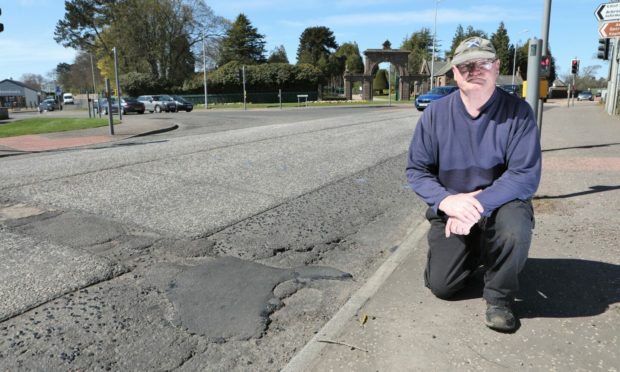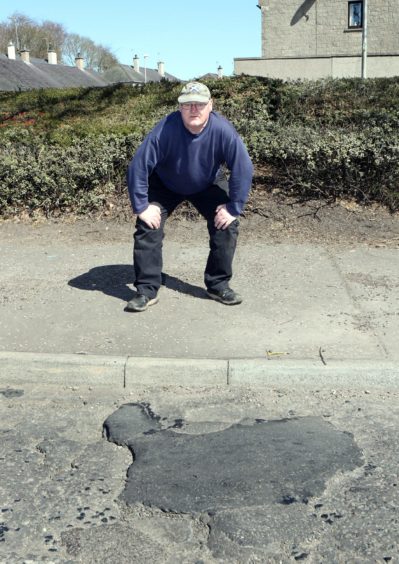A former tank driver has described how even he struggles to negotiate the potholes in Angus.
Nigel Bain has a lot of experience on the roads. The retired lorry driver has worked in roads maintenance and trained with the 4th Royal Tank Regiment.
But even he can’t cope with the pothole problem in his home town of Arbroath.
In the second of our Counting the Cost of Potholes series, we reveal how Angus Council increased spending on temporary repairs last financial year.
And how the move was a false economy.

In 2020-21, the council went £63,000 over its £300,000 budget for reactive patching – temporary repairs.
But just £282,000 of the £470,000 set aside for planned patching work was spent.
Capital spending on carriageway resurfacing also fell.
‘Fix it properly first time, every time’
Nigel said temporary repairs were adding to motorists’ potholes misery across Angus.
“There is a road up from my house that was sunken – gave you a right jolt going over it,” he said.
“The company came out and patched it but it’s back to the way it was.
“Fix it properly first time, every time. They would actually save money.”
Angus Council’s expenditure on temporary repairs is in conflict with its own road maintenance strategy.
The document acknowledges that temporary repairs can lead to “a patchwork effect with weak points in the carriageway”.
But temporary repairs were the “highest budget spend within Angus Council”.
Angus Council commits £1 million towards potholes
When the council set its budget in March, it allocated £1m in one-off funding for road maintenance and pothole repairs.
The council also said it intends to spend £39.3m on roads, footpaths and bridges over the next five years.
Studies previously suggested Angus should be spending around £7 million annually to keep roads up to scratch.
Angus Council said prioritising roads projects while delivering other services was a “complex matter”.
“Our investment in roads maintenance is certainly an annual consideration in setting of the council’s budgets and council tax levels,” said a spokesperson.
The council said it inspects potholes and assesses the risk they pose to road users.
“We then arrange for the repair to be undertaken, which may be an emergency if very serious or may form part of a series of repairs later if less serious.
“Repairs can be temporary so as to allow for a more permanent solution later or may be repaired as a first-time fix, which depends on nature and location of the defect.”

